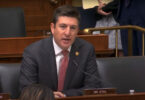Last week US Treasury Under Secretary Nellie Liang gave a speech in which she argued that non bank payment providers should be regulated at the federal level rather than the state level. She was including all money transmitters, e-money firms and stablecoin issuers. Today the New York State Department of Financial Services (NYDFS) is the regulator of the largest stablecoin issuers.
The Treasury previously raised this point as part of its 2022 paper on the future of payments which delved into a potential CBDC. The question is whether this proposal will have the level of backlash that the retail CBDC attracted.
Ms Liang made some strong points. She argued that the idea of regulating money transmitters at the state level was based on physical cash, where someone would go to a local money exchanger to send cash to someone in another state. A key point is the money transmitter wouldn’t hold the cash for very long.
Now that we have digital apps, we keep money in those apps, meaning these money transmitters or e-money providers are responsible for large sums of cash. That’s especially the case for stablecoins. However, the law regarding how the money transmitter can invest these monies varies significantly between states.
Hence, she’s arguing that if the nature of what is being regulated has changed, one should reconsider how those activities are regulated.
Perhaps as an incentive, she noted that the state regulation of these entities means they don’t have access to FedACH or FedNow.
From the perspective of the issuers, they have to manage multiple state licenses with differing requirements and high compliance costs. Arguably that raises barriers to entry.
“The existing regulatory patchwork is burdensome and inefficient, and at the same time does not adequately address risks,” she said.
Federal stablecoin, e-money regulatory proposals
We thought the proposal might be for national rules with local supervision. However, Ms Liang believes there’s also the need for national supervision.
Standards would cover financial resources, risk management, supervision and activities. E-money issuers would be restricted to payment-related activities, otherwise they start to resemble banks. They would also consider whether the affiliates of e-money issuers might have limitations similar to the requirement that banks can’t be involved in commerce to prevent antitrust issues.
In her conclusion she said, “We have long identified stablecoins as presenting payments and run risks like those presented today by e-money issuers. At the same time, stablecoins present some unique risks because they rely on distributed ledger technology and thus may involve a different set of intermediaries and can be transferred peer-to-peer. We continue to support efforts in Congress to establish such a framework.”
On the broader issue of federal payment regulation, she invited stakeholders to continue the conversation.
Stepping back, it’s worth comparing this payment proposal with the concept of state chartered banks. State banks make sense because they are often community focused. While it’s conceivable to have a locally focused payment app, it’s far less likely. One of the biggest questions is whether federal licenses would mean fewer licensed firms. Because that would not be good for competition.






